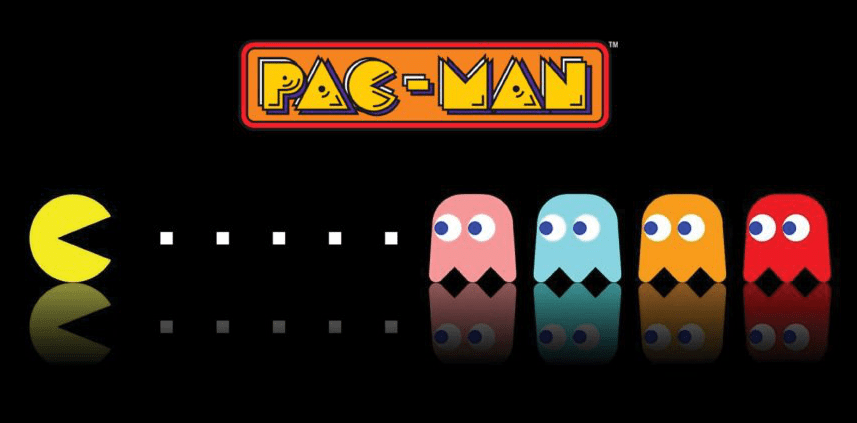In the world of video games, few titles have achieved the legendary status of Pac-Man. Launched in 1980 by Namco (now Bandai Namco Entertainment), th
In the world of video games, few titles have achieved the legendary status of Pac-Man. Launched in 1980 by Namco (now Bandai Namco Entertainment), this simple yet addictive arcade game became a cultural phenomenon, influencing generations of gamers and redefining the gaming industry. The 30th anniversary of Pac-Man, celebrated in 2010, was not just a nostalgic tribute but a milestone that honored one of the most iconic figures in digital entertainment history.
The Origins of Pac-Man
The story of Pac-Man begins in Japan, where game designer Toru Iwatani sought to create a game that would appeal to a wider audience than the typical action-heavy, space shooter games dominating arcades at the time. Iwatani envisioned a game that was fun, light-hearted, and suitable for both men and women.
Inspired by the image of a pizza with a missing slice, he designed Pac-Man — a yellow, pie-shaped character who moves through a maze, munching on dots and avoiding colorful ghosts. Originally titled “Puck-Man” in Japan, the game was renamed Pac-Man for its international release to prevent vandalism of arcade machines (changing “Puck” to an obscene word with a single scratch).
Pac-Man was officially released on May 22, 1980, and it didn’t take long for the game to become a global sensation.
More about: pacman 30th anniversary
What Made Pac-Man Special
Pac-Man revolutionized the gaming industry in several ways:
- Non-Violent Gameplay: At a time when most arcade games involved shooting or fighting, Pac-Man’s maze-based gameplay was refreshing and unique.
- Universal Appeal: It attracted players across different age groups and genders, especially female players, a rarity in early video game demographics.
- Character-Driven Design: With distinct ghosts like Blinky, Pinky, Inky, and Clyde, each with unique AI behaviors, Pac-Man was among the first games to give personalities to non-playable characters.
- Merchandising Power: Pac-Man spawned a huge range of merchandise, from toys to a cartoon series, and even a hit pop song, “Pac-Man Fever.”
Cultural Impact and Legacy
By the mid-1980s, Pac-Man had become more than a game — it was a cultural icon. Pac-Man fever swept across the world, and the character became a symbol of the early video game boom. It was one of the first games to achieve mainstream recognition, referenced in music, television, and movies.
Pac-Man also holds multiple world records. It was the first video game character to be featured in a Macy’s Thanksgiving Day Parade, and the original arcade version has been played billions of times globally.
In 2005, Guinness World Records named Pac-Man as the “Most Successful Coin-Operated Game” of all time. Its legacy is reflected in hundreds of adaptations, spin-offs, and reboots over the years.

Celebrating the 30th Anniversary
The 30th anniversary of Pac-Man in 2010 was a grand celebration that honored its decades-long journey and introduced the game to a new generation of players.
1. Google Doodle Tribute
Perhaps the most memorable tribute came from Google. On May 21, 2010, Google replaced its traditional logo with a fully playable version of Pac-Man as its homepage Doodle. This interactive version retained the original game’s design, music, and gameplay — and even included a two-player mode with Ms. Pac-Man as Player Two.
This Doodle became so popular that Google eventually made it permanently available on its site. It marked the first time a Google Doodle was interactive and playable, showing just how impactful Pac-Man’s legacy was even three decades after its release.
2. Special Edition Games
Bandai Namco released several commemorative versions of the game, including:
- Pac-Man Championship Edition DX: An updated version with enhanced graphics, new mazes, and fast-paced gameplay, designed to appeal to modern audiences while preserving the essence of the original.
- Pac-Man Party: A game that blended classic maze-chase gameplay with mini-games, bringing the franchise into a party game format for family fun.
3. Public Events and Merchandise
Throughout 2010, various events were held around the world to honor Pac-Man. These included:
- Arcade tournaments and retro gaming expos
- Limited edition Pac-Man merchandise, from apparel to arcade cabinets
- Educational programs exploring video game history in schools and museums
Why Pac-Man Still Matters
Even after 30 years, Pac-Man remains a relevant and beloved game. Here’s why:
Timeless Gameplay
Pac-Man’s simple controls — just four directions — make it easy for anyone to play. Yet mastering the game is a real challenge, which gives it lasting appeal. The mix of strategy, pattern recognition, and fast reflexes means that every game session can feel unique.
Cross-Generational Appeal
Parents who played Pac-Man in the ’80s now introduce it to their children. Its non-violent, engaging gameplay continues to make it suitable for all ages, bridging the generation gap in gaming.
Foundations of Modern Game Design
Pac-Man introduced game design principles that are now standard:
- AI-based enemy behavior (ghosts with different movement styles)
- Level progression
- High score competition
- Simple rules with complex underlying mechanics
These foundational ideas inspired countless future games and still influence developers today.
The Legacy Continues
Since the 30th anniversary, Pac-Man has continued to evolve:
- Mobile Games: Titles like Pac-Man 256 and Pac-Man Pop have taken the character into new genres and platforms.
- Esports & Tournaments: Pac-Man has even appeared in competitive gaming formats.
- Crossovers: The character has been featured in games like Super Smash Bros., ensuring his presence in modern gaming culture.
- VR and AR Adaptations: With new technology, Pac-Man is being reimagined in virtual and augmented reality formats.
In 2020, the game celebrated its 40th anniversary with new titles and continued fanfare, reaffirming that the Pac is still back — and thriving.
FAQs: Pac-Man 30th Anniversary
Q1: When was Pac-Man released?
Pac-Man was officially released in Japan on May 22, 1980, and later in North America in October of the same year.
Q2: Who created Pac-Man?
Pac-Man was created by Toru Iwatani, a game designer at Namco (now Bandai Namco Entertainment).
Q3: Why was the 30th anniversary of Pac-Man significant?
It marked a major milestone in video game history, celebrating three decades of one of the most influential games ever made. The anniversary included tributes like the Google Doodle, new game editions, and global fan celebrations.
Q4: What was special about the Google Doodle for Pac-Man?
On May 21, 2010, Google released a playable version of Pac-Man on its homepage, which became immensely popular and was later archived permanently. It included authentic gameplay and a two-player mode with Ms. Pac-Man.
Q5: How did Pac-Man change the gaming industry?
Pac-Man introduced non-violent, character-driven gameplay that appealed to a broad demographic. It also introduced early AI behavior, memorable characters, and the concept of “power-ups” through energizers.
Q6: What platforms is Pac-Man available on today?
Pac-Man is available on nearly all modern platforms, including consoles, PCs, mobile phones, and even smart TVs. It’s also featured in retro game collections and cloud gaming services.
Q7: What are some of the best Pac-Man games released after the original?
Some notable titles include:
- Ms. Pac-Man (1981)
- Pac-Man Championship Edition (2007)
- Pac-Man 256 (2015)
- Pac-Man World Re-Pac (2022)
Q8: Is Pac-Man still popular today?
Yes, Pac-Man remains a beloved franchise with millions of fans worldwide. Its games are still played, referenced in pop culture, and featured in modern game collaborations.
Q9: What is the highest score possible in the original Pac-Man?
The maximum score is 3,333,360, achieved by completing all 255 levels and collecting every possible point. This is known as a “perfect game.”
Q10: Will there be more Pac-Man anniversaries celebrated?
Absolutely. Pac-Man celebrated its 40th anniversary in 2020, and future milestones will likely be marked with new games, events, and fanfare. The franchise is too iconic to fade away.
Conclusion
The 30th anniversary of Pac-Man wasn’t just about a game — it was a celebration of creativity, innovation, and the timeless joy of playing. From humble beginnings as a maze-chasing arcade game to becoming a global cultural icon, Pac-Man’s legacy is secure. For millions around the world, Pac-Man isn’t just a character; he represents a golden era of gaming — and he’s still chomping strong.
Whether you’re a retro gamer or a newcomer discovering Pac-Man for the first time, one thing is certain: the power of the yellow circle will never fade.
More Info: onlinemrkting




COMMENTS